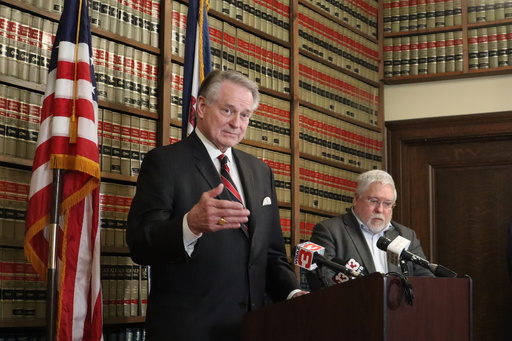
WASHINGTON — In the upcoming general election on November 5, Democratic Vice President Kamala Harris will go head-to-head with former Republican President Donald Trump for West Virginia’s four electoral votes. Voters will also be making decisions on a variety of federal and state positions, highlighting a notable U.S. Senate race that could influence the balance of power in the chamber for the following year.
Neither Harris nor Trump has actively campaigned in West Virginia, which has remained largely non-competitive in presidential races for several years. Historically, West Virginia was a solidly Democratic state throughout most of the 20th century. However, since George W. Bush’s election in 2000, Republican candidates have consistently won the state by wide margins.
In addition to the major party candidates, this election will also feature several independent or third-party candidates. Notably, Jill Stein and Robert F. Kennedy Jr. will be on the ballot; Kennedy Jr. has previously suspended his campaign in August and offered his support to Trump.
Regarding the U.S. Senate race, Republican Governor Jim Justice is in a contest with Democrat Glenn Elliott and Libertarian David Moran, seeking to fill the seat of Joe Manchin. Manchin, who has transitioned from a Democrat to an independent, has declined to seek a third full term. His decision has presented challenges for the Democrats aiming to retain control of the Senate. Should Justice secure a victory, it could enable the Republicans to gain a majority in the Senate, provided they maintain their other seats if Trump wins the presidency.
Furthermore, the gubernatorial race features Republican Attorney General Patrick Morrisey opposing Democrat Steve Williams along with three third-party candidates, as they contend to replace Justice. Voters will also engage in two U.S. House races, one being for the 2nd Congressional District seat, which Republican incumbent Alex Mooney vacated to run in the Senate primary against Justice.
On the ballot this year are also positions for the state Senate and House, attorney general, and various state offices, alongside a proposed amendment addressing medically assisted suicide.
In the past few election cycles, West Virginia has increasingly leaned towards Republican candidates for Senate, House, and state-level offices. Manchin was one of the last Democrats representing the state, especially after changing his party affiliation.
As for the electoral process, West Virginia is set for Election Day on November 5, with polls closing at 7:30 p.m. ET. The four electoral votes will be allocated to the statewide winner. Key races include the presidential election between Harris and Trump, the Senate contest featuring Elliott and Justice, as well as the gubernatorial race with Williams and Morrisey.
The turnout of registered voters as of September 30, 2024, stands at approximately 1,201,724, reflecting a composition of 29% Democrats, 41% Republicans, and 25% independents. In the 2020 presidential election, voter turnout was 63% of registered voters, showcasing previous engagement levels. Pre-election ballot casting has varied, with about 50% of total votes cast before Election Day in 2020 and around 29% in 2022. As the current election approaches, updates on early voting will be closely monitored.
The process of counting votes will kick off with the first reports expected shortly after polls close, with previous elections indicating most votes will be tallied by midnight ET on Election Day.
